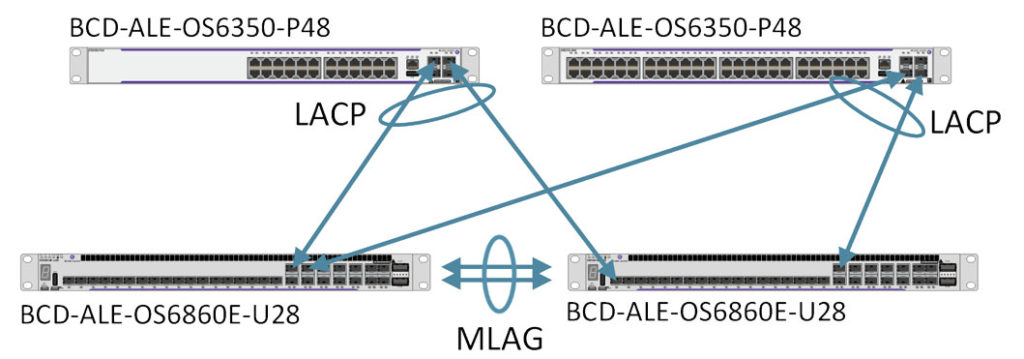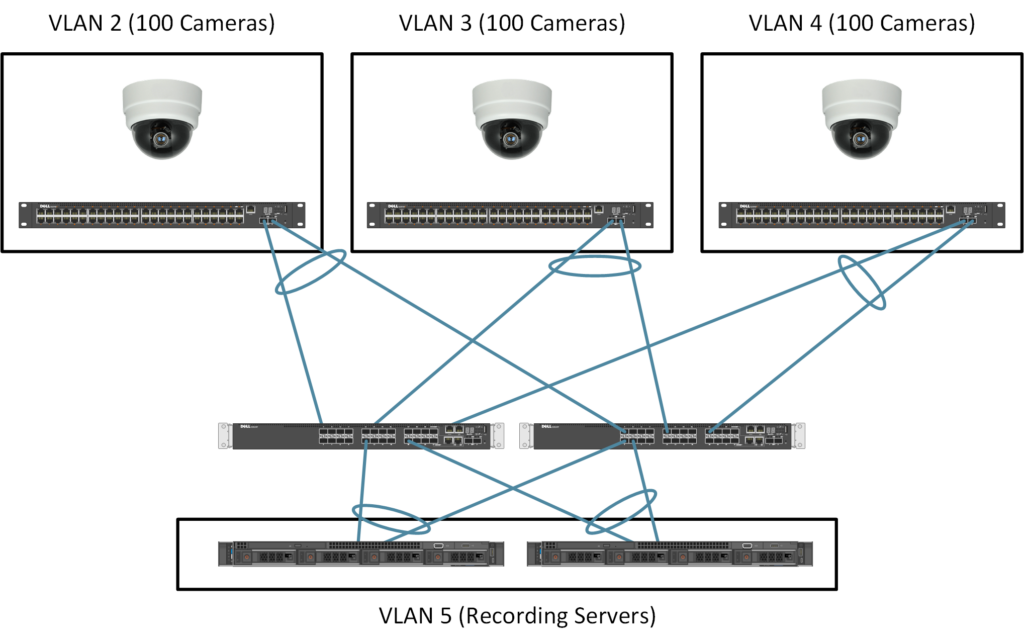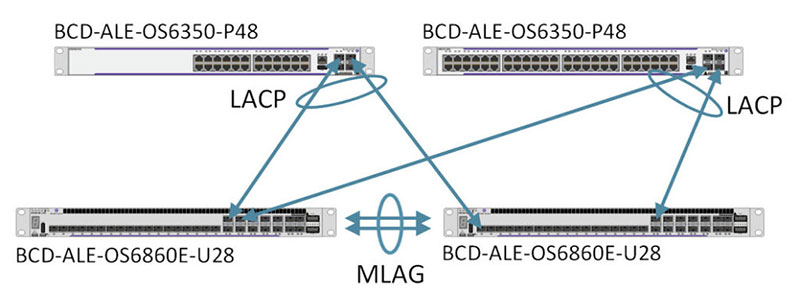In the video surveillance space, highly available solutions have become the new standard for any form of mission-critical deployment. It is now commonplace to see even mid-level solutions use features that use to be only for high-end hardware, including RAID 5/6 disk protection, redundant power, and the use of local and remote failover servers.
What often gets overlooked is the underlying network infrastructure and its resiliency and high availability. Evaluating the network that the physical security solution will deploy on, is critical when choosing a proper infrastructure.
When determining the level of availability that a network needs, it is essential to ask these questions:
- How important is the video? Does it need to be ‘always on’?
- How many faults can this network tolerate?
- How many cameras does the entire project entail?
Resiliency and high availability can be accomplished by combining multiple forms of hardware and network architecture to complete the solution. These features include protocol based, hardware based, and infrastructure-based resiliency options. It is also critical to make a distinction between resiliency, fault-tolerance, and high availability. Resilient networks may not necessarily be highly available, since they can withstand or recover from an error or failure but may not deliver always-on performance.
On the physical/hardware level, many steps can be taken to ensure a network switch stays online. One of the most common forms of increased availability at the hardware level is redundant power. An often-overlooked issue with networking hardware is ensuring that the solution installed is up to the spec needed for the project. Deploying entry-level switches into an environment that demands a high-end switch’s higher processing power will eventually lead to a device failure.
Employing various protocols to increase a network’s resiliency, convergence time, and performance. These protocols range from commonly used, easy to deploy protocols like Link Aggregation Control Protocol (LACP), Spanning Tree Protocol (STP), to more complex protocols like Open Shortest Path First (OSPF) and Protocol Independent Multicast (PIM). IEEE 802.1aq, aka Shortest Path Bridging, is simple to deploy and a versatile protocol to enable high availability within a network.

Layering these protocols can significantly improve the availability and performance of a video surveillance network. Combining Rapid Spanning Tree Protocol (RSTP) and OSPF with a dual-core layer 3 utilizing LACP from core switches to edge devices can offer significant performance increases to the convergence time of a network. Combining a pair of SPB core switches with Multichassis Link Aggregation (MLAG) and Virtualized Chassis (VC) allows for increased scalability of local resources and provides active-active, load-balancing uplinks to all edge devices, with sub-second convergence should a network device fail.

Finally, ensuring the entire network operates correctly means choosing the right network infrastructure for every project. The overarching infrastructure of a video surveillance network must take multiple steps to ensure that it is architected and purpose-built to the project’s requirements. One critical part of any video surveillance network infrastructure is to ensure it is properly segmented with Virtual Local Area Networks (VLAN). For deployments that are around 80 cameras and above, it is critical to segment the network to prevent crosstalk between cameras. Furthermore, implementing VLANs ensures that if a device were to go offline, it does not take the entire network down with it.
In environments where multiple users are accessing the same video data, Multicast should be considered as both a resiliency and performance feature. When a Video Management System (VMS) supports multicast, the performance increases and reliability of a network significantly improves. Duplicate copies of video streams aren’t being pushed through the network, decreasing both the load on network devices and time to display the video while increasing overall bandwidth availability.
The infrastructure of a network is a conglomeration of multiple factors – including the topology of the network, resiliency, physical hardware installed, and the overlaying protocols enabling a networks functionality. Ensuring a network is built to service the project properly is critical to delivering reliable and resilient operation.

